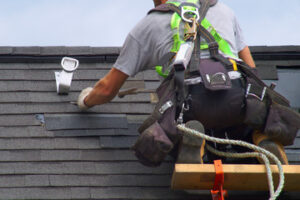When rumors started linking aluminum-based antiperspirants to breast cancer and Alzheimer’s disease, more people began switching to natural deodorants. But how do they compare to the traditional stuff?

Natural deodorants are formulated with clean ingredients that are gentle on the skin. They’re ideal for those who suffer from sensitive underarms, as they won’t cause redness or rashes. Visit their Website for more details.
When you use an aluminum-based antiperspirant, it clogs your sweat glands and prevents your body from naturally cooling itself. This can lead to odor-causing buildup and skin irritation. Luckily, clean beauty brands are crafting effective and safe deodorants that don’t contain aluminum. These natural formulas work by inhibiting the growth of odor-causing bacteria on your skin and absorbing excess sweat.
They also include ingredients that keep your underarms feeling fresh and dry all day. For example, some clean beauty brands, like Type:A’s dry-cream formula, combine cornstarch and arrowroot powder to create an invisible barrier that keeps you feeling clean and fresh all day. Other formulas, like Tom’s of Maine’s scented organic coconut oil deodorant, combine zinc neodecanoate and shea butter to reduce odor and soothe your underarms.
No matter what kind of deodorant you choose, it’s important to apply it correctly. Make sure to wash your underarms before applying, and gently pat your skin dry with a soft towel. You’ll also want to experiment with how much you need to apply – some people may need more protection than others, so it’s important to find a formula that works best for you.
You’ve probably heard the rumors about a “detox” period when you switch to an aluminum free deodorant. That’s because years of wearing antiperspirant have plugged up your sweat ducts and your body has to recalibrate. This transition period typically lasts for a couple of weeks and can vary from person to person.
However, once you get past this period, you’ll love the benefits of a natural deodorant that’s better for your skin and health. For example, many natural deodorants like Kosas’ scented and unscented roll-on use an AHA blend to fight odor-causing bacteria, shea butter to nourish your underarms and glycerin to hydrate.
They’re also made without baking soda, which often leads to white marks on your clothes. And they’re free of the chemicals that can cause yellow stains on your favorite shirts, such as parabens, propylene glycol, talc, and petroleum. This means you’ll be able to wear your favorite clothes again without worrying about the embarrassing stains that can occur when you use an aluminum-based antiperspirant.
No More White Marks on Your Clothes
When you use antiperspirant that contains aluminum, it can rub off on your clothing and leave unsightly white marks or stains. These can be hard to get out of light shirts. With aluminum-free deodorant, you won’t have to worry about these stains. The best natural or aluminum-free deodorants are formulated to be non-greasy and do not leave any white marks on your clothes. The best aluminum free deodorants will also have a clean scent and be easy to apply, without any sticky residue.
Many people who have switched to an aluminum-free deodorant have experienced a detox phase when they first start using the product. The transition can last up to two weeks, and it is normal. This is because the aluminum in traditional antiperspirants has been clogging up your sweat glands, and you will need to retrain them to work normally again. After the transition period, most people find that their new deodorant works just as well (if not better) than the aluminum-based products they used before.
You may need to reapply your deodorant throughout the day to keep you fresh and odor-free, especially if you are active or sweat a lot. This is because some natural deodorants don’t have the same level of effectiveness as antiperspirant, but they do help to reduce body odor by preventing the growth of bacteria that causes odor.
The key is to find a natural deodorant that is gentle on your skin and works with your body chemistry. Many brands use ingredients like coconut oil, baking soda, shea butter, sunflower seed or beeswax to control odor and keep you fresh all day long. This is why it’s important to try out different products until you find one that works for your unique body chemistry and activities.
If you do notice any white marks or stains on your clothing, it is best to use a damp cloth to remove them quickly. This will avoid further damage to your clothes and will also allow the deodorant to dry before you wear it again. Make sure you don’t scrub too hard, as this can cause the skin to become irritated.
No More Dark or Yellow Stains on Your Shirts
Sweat stains aren’t a sign of excessive perspiration, but rather, a chemical reaction between the aluminum in some antiperspirants and the proteins found in underarm sweat. Over time, this interaction can cause dark or yellow stains that can be very difficult to get out of clothing. Fortunately, switching to an aluminum free deodorant can help prevent these unsightly pit stains by eliminating the aluminum that causes them.
In addition, many manufacturers now offer natural deodorants that are completely aluminum-free. While these products may not block sweat the way that aluminum-based antiperspirants do, they still keep odor under control by using ingredients such as baking soda, activated charcoal, and mineral salts to absorb and neutralize body odor. These natural options are gentle on the skin and align with a more environmentally conscious approach to personal hygiene.
If you do decide to switch to an aluminum-free deodorant, be prepared for a brief detox period as your body adjusts to regulating odor without the sweat-blocking properties of aluminum. However, most people report that the detox phase lasts no longer than a few weeks. And, once the transition is complete, you’ll enjoy the full benefits of your new deodorant while keeping your underarms dry and smelling fresh.
Another benefit of choosing an aluminum-free deodorant is that it doesn’t leave dark or yellow stains on your shirt. This is because the aluminum in traditional antiperspirants can cause these stains when it interacts with the proteins found in underarm sweat. This interaction is triggered when the sweat dries and the alum in the antiperspirant rubs off on the shirt. As the sweat dries, it becomes a perfect breeding ground for odor-causing bacteria that can stain your clothes with a yellowish color. This can happen even if you only apply the deodorant to your underarms and not the rest of your body, and it can occur with both men’s and women’s deodorants. The best solution for preventing these stains is to be sure to let your deodorant dry fully before you put on your clothes, and to wear dark or light colors so that the stains are less noticeable.
No More Harsh Chemicals
It wasn’t too long ago that when you reached the end of your deodorant stick, you would head down to the drug store and pick one up from the wall of different kinds. You may have gone with the cheapest option, or the one with the cool commercial that you saw on TV.
Today, however, there is a whole new kind of deodorant available: aluminum free. These products are made with natural ingredients and are not only a healthier alternative to traditional antiperspirant, but they also have a wide variety of other benefits.
In fact, these types of deodorants are growing in popularity. They’re becoming increasingly available in both drug stores and online retailers. This is largely due to the fact that many consumers are worried about the health risks associated with the use of antiperspirant, which contain aluminum. Some of these concerns include a possible link to Alzheimer’s disease and breast cancer, among other things.
Another reason for the growing interest in these kinds of products is that they are a more environmentally friendly choice. While they do contain some chemicals, most of them are made from natural ingredients that can be found in the earth. They also tend to be less expensive than traditional antiperspirants.
When you choose a natural deodorant, it’s important to keep in mind that your body will need some time to adjust to the absence of aluminum. This is usually referred to as the detox period, and it’s normal for your armpits to smell during this time.
Once your body has adjusted to the lack of aluminum, you’ll be able to enjoy all the other benefits that come with this kind of deodorant. This includes keeping your underarms dry all day and eliminating white marks on your shirts. In addition, natural deodorants often do a better job at eliminating odor than the kinds that contain aluminum.
Finally, these deodorants can also help to reduce the dreaded underarm rash that some people experience with traditional antiperspirant. This is because they are formulated with more natural ingredients and tend to be less harsh on the skin than their aluminum-containing counterparts.


